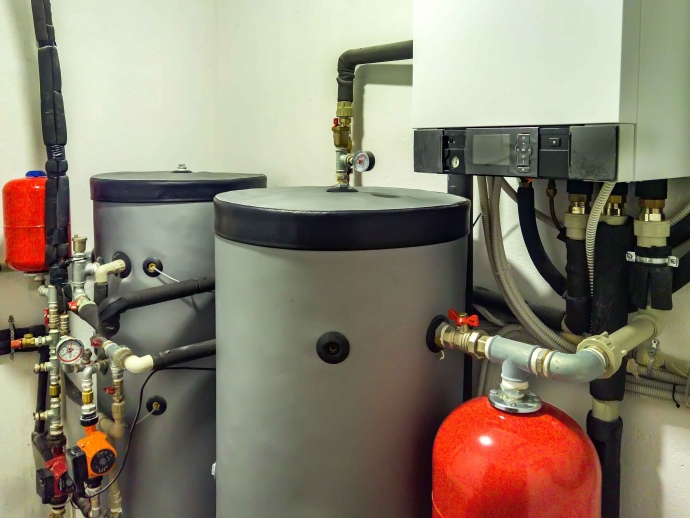Tankless vs Traditional Water Heaters: A Complete Cost and Efficiency Comparison for Texas Homes

Choosing the right water heater is essential for Texas homeowners, especially considering the state's diverse climate and varying water heating needs. Two primary types of water heaters dominate the market: traditional tank water heaters and tankless (or on-demand) water heaters. Each option has its advantages and disadvantages, particularly concerning cost, efficiency, and performance. This article will provide a comprehensive comparison of tankless and traditional water heaters, helping you make an informed decision for your home.
Understanding the Basics
Traditional Water Heaters: These units typically store between 30 to 80 gallons of hot water in a tank, which is kept heated by a burner or electric element. When you turn on a hot water tap, hot water is drawn from the tank, and cold water enters to be heated. The downside is that once the hot water supply is depleted, it can take time—up to 45 minutes—to refill and reheat.
Tankless Water Heaters: In contrast, tankless water heaters heat water on demand. When you turn on a hot water tap, cold water flows through a pipe into the unit, where it is heated instantly by either gas or electricity. This means you have an endless supply of hot water without the need for a storage tank.
Cost Comparison
Initial Purchase and Installation Costs: Traditional water heaters are generally less expensive upfront, with prices ranging from $300 to $1,000 for the unit itself plus installation costs. In contrast, tankless systems typically range from $800 to $3,000 installed due to their more complex technology and installation requirements.
Operating Costs: While traditional heaters may be cheaper initially, they can be more expensive to operate over time. Traditional units continuously heat water in the tank, leading to higher energy bills—often consuming 20-30% more energy than tankless systems. Tankless models only heat water as needed, which can lead to significant savings on energy costs over their lifespan.
Efficiency Ratings
Energy Efficiency: Tankless water heaters are known for their superior energy efficiency. According to the U.S. Department of Energy, they can be 24-34% more efficient than traditional models for homes that use less than 41 gallons of hot water daily. This efficiency translates into lower utility bills and reduced environmental impact.
Lifespan: Another factor to consider is lifespan. Traditional water heaters typically last between 8 to 15 years, while tankless units can last over 20 years with proper maintenance. This longevity can offset the higher initial investment in tankless systems.
Performance Considerations
Hot Water Supply: One of the most significant advantages of tankless systems is their ability to provide an endless supply of hot water. This feature is particularly beneficial for larger households or homes with high hot water demands (e.g., multiple showers running simultaneously). Traditional tanks can run out of hot water during peak usage times, leading to inconvenience.
Recovery Rate: The recovery rate refers to how quickly a heater can replenish its hot water supply after it has been depleted. Traditional units have a defined recovery rate based on their tank size; once depleted, it may take considerable time before hot water is available again. Tankless systems provide immediate heat upon demand but may struggle if multiple outlets are used at once unless properly sized for the household's needs.
Space Considerations
Tankless water heaters are compact and can be installed in smaller spaces compared to traditional models that require significant floor space for their tanks. This space-saving feature makes them ideal for homes with limited installation areas or those looking to maximize usable space.
Maintenance Requirements
Both types of systems require maintenance but differ in complexity:
-
Traditional Water Heaters: Regular maintenance includes flushing the tank annually to remove sediment buildup and checking the anode rod every few years.
-
Tankless Water Heaters: These units require descaling every 12 months or so to remove mineral buildup from hard water, especially relevant in many parts of Texas where hard water is common. While this may seem like an added hassle, it helps maintain efficiency and prolongs lifespan.
Environmental Impact
With growing awareness around sustainability, many homeowners are considering the environmental implications of their choices. Tankless units generally have a lower carbon footprint due to their energy efficiency and longer lifespan. Additionally, they often qualify for rebates or incentives from local utilities aimed at promoting energy-efficient appliances.
Conclusion: Making the Right Choice
When deciding between a traditional or tankless water heater for your Texas home, consider your family's specific needs regarding hot water usage, budget constraints, and long-term goals for energy savings and sustainability.
-
Choose a Traditional Water Heater if:
-
You have lower hot water demands.
-
You prefer a lower initial investment.
-
You don’t mind waiting for hot water during peak usage times.
-
-
Opt for a Tankless Water Heater if:
-
You have high hot water demands or multiple simultaneous users.
-
You want long-term energy savings and lower utility bills.
-
You value space-saving designs and longer equipment lifespan.
-
Ultimately, both options have their merits; understanding your household's unique needs will guide you toward making an informed decision that balances cost with efficiency and performance. Whether you choose traditional or tankless, ensuring proper installation and maintenance will maximize your investment in home comfort.

